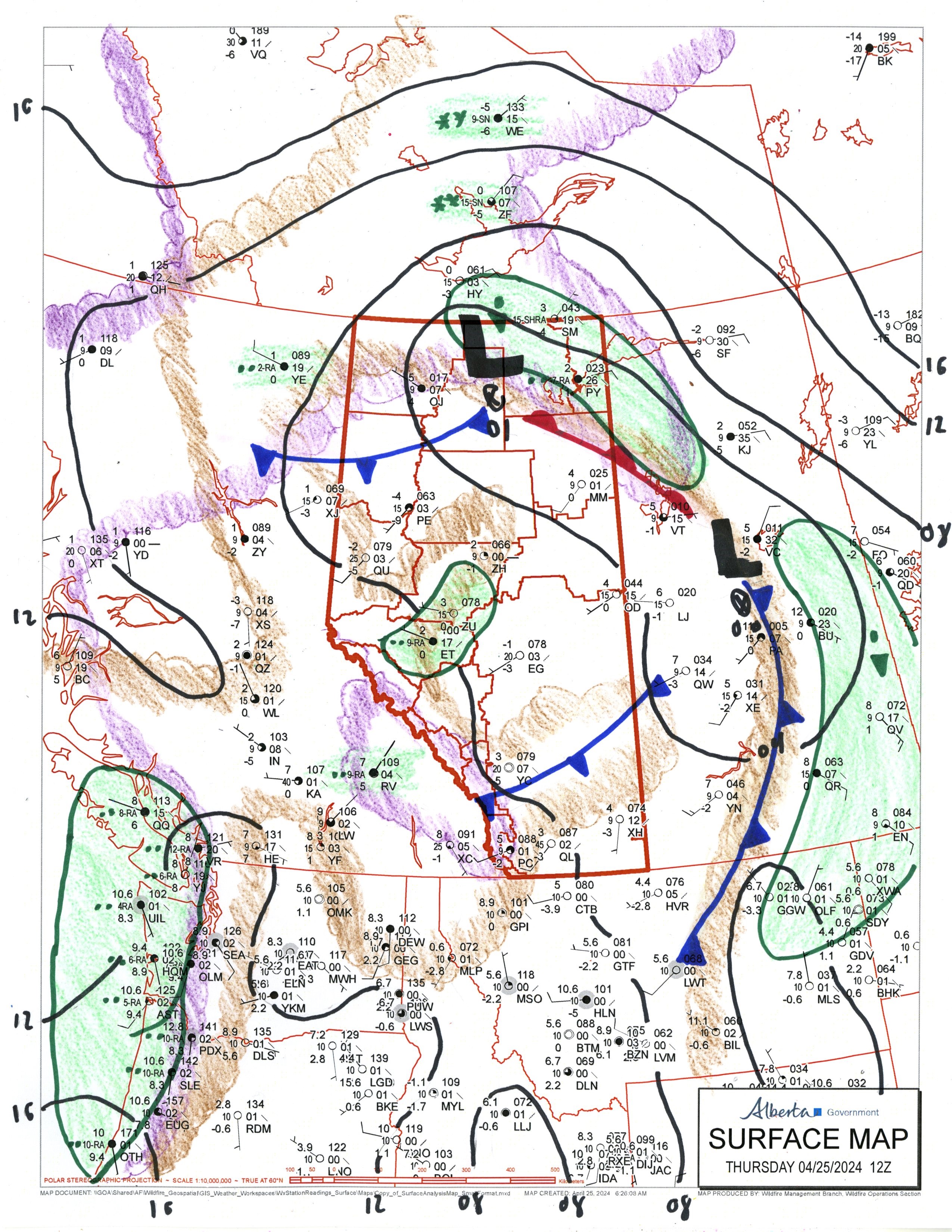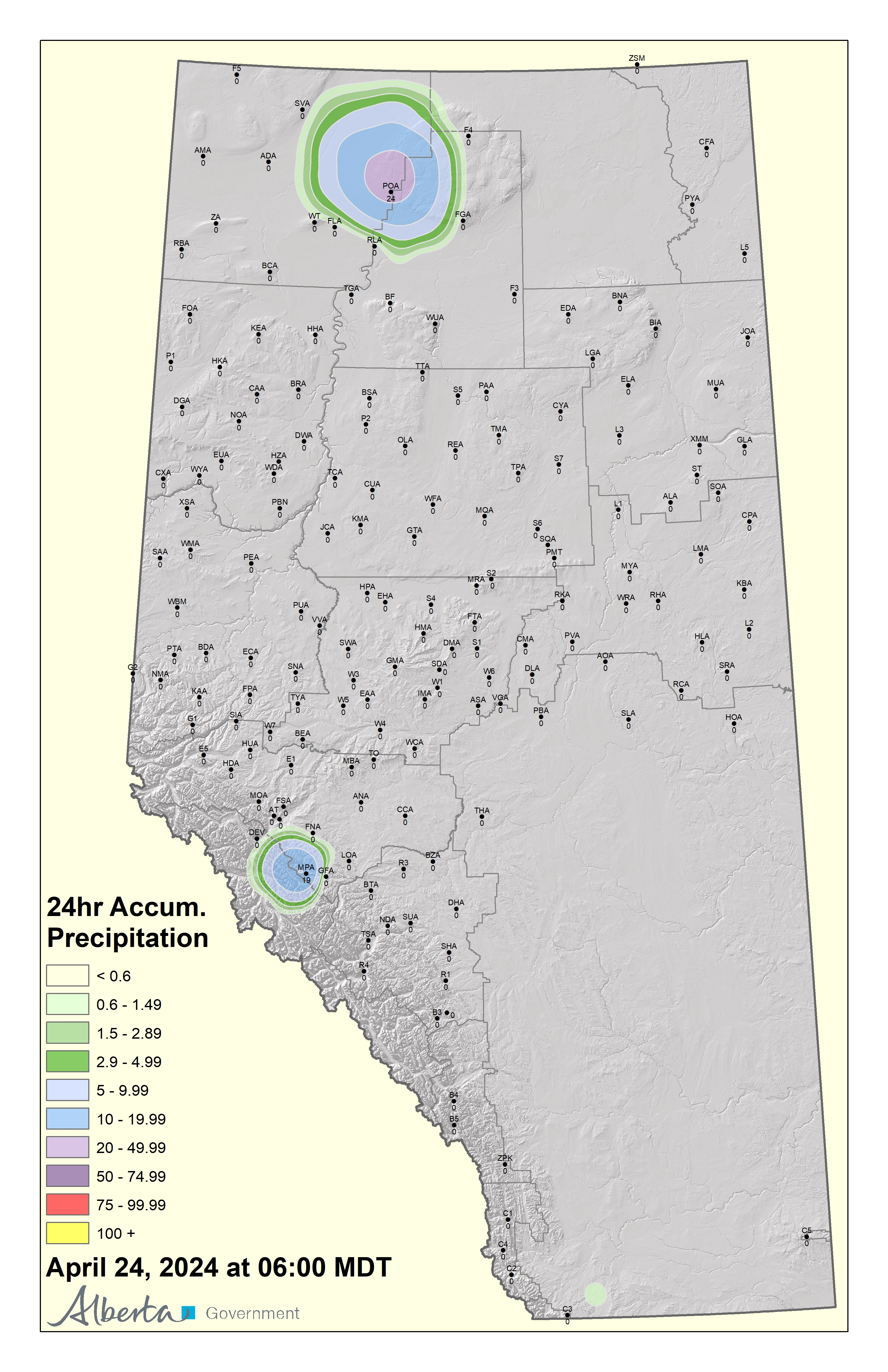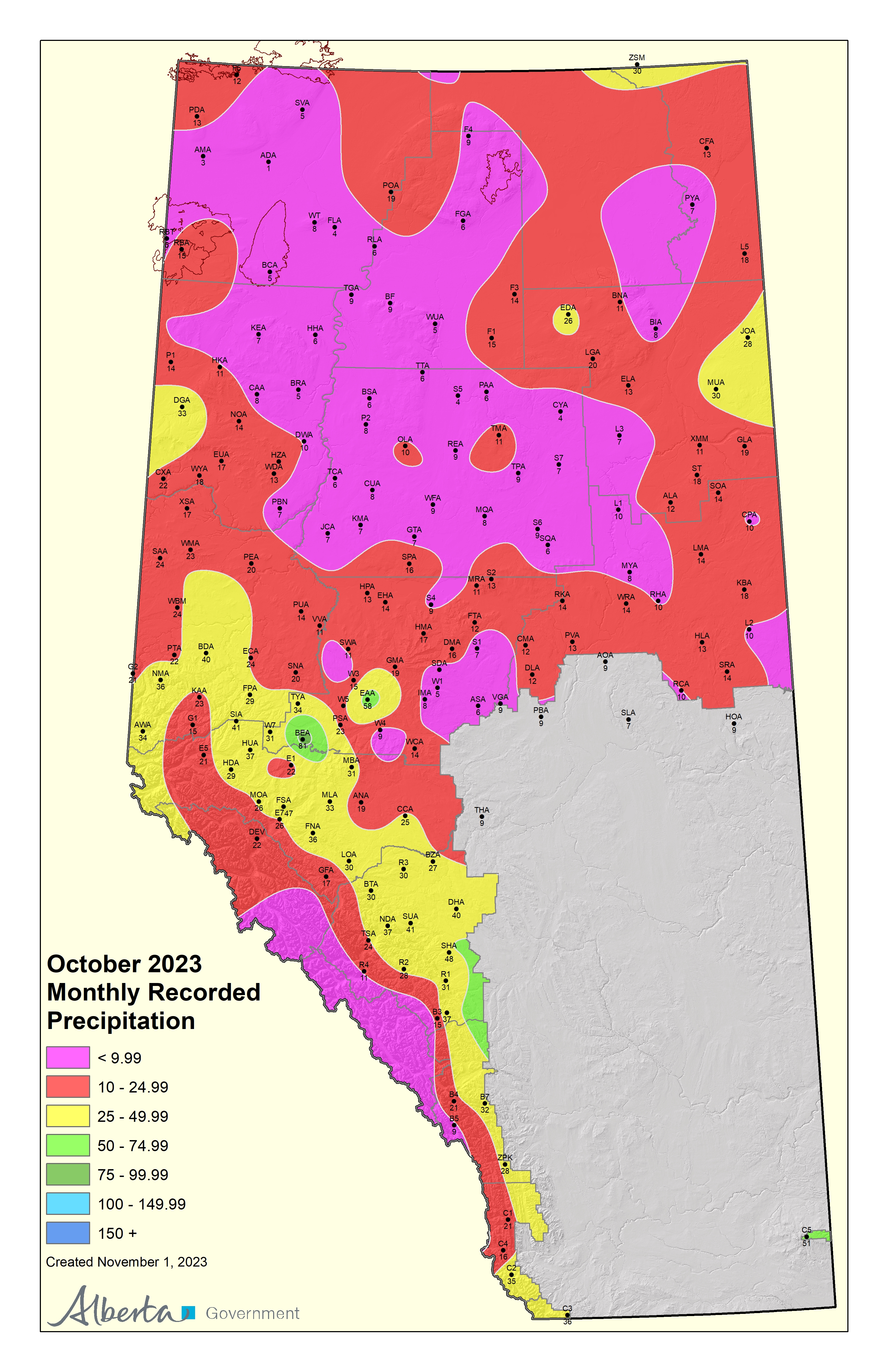Government mail service may be affected by the Canada Post labour disruption. Learn about how critical government mail will be handled.
Call 310-FIRE (3473) to report a wildfire in a forested area.
Overview
Forecast products are created by Alberta Wildfire meteorologists to inform wildfire personnel, fire managers and other stakeholders in the Forest Protection Area of Alberta. Products are generated during the wildfire season, from March 1 to October 31, once snow has melted.
Forecast products
Data
- AM weather data (PDF)
- AM weather data (CSV)
- PM weather data (PDF)
- PM weather data (CSV)
- Weather Report Format (PDF) (terminology and definitions)
Weather data has been collected daily in Alberta since the late 1960s in some locations.
Contact Alberta Wildfire’s weather section at [email protected] to obtain historical weather data.
Lightning
Alberta Wildfire operates a lightning detection system developed by VAISALA. The system enables fire managers to monitor cloud-to-ground lightning activity on a provincial basis.
Weather stations
The Forestry Division operates a network of close to 200 weather stations to monitor fire danger in Alberta’s forests.
Red Flag Warning or Watch
The Red Flag Watch is intended to provide situational awareness for wildfire personnel and the public that a hazardous fire environment is developing.
Annual fire weather reports
Each annual report summarizes the fire season from a synoptic weather perspective, highlighting the weather conditions that lead up to extreme fire danger.
Contact
For questions about weather data, forecasts and observations:
Email: [email protected]
Information line: 1-866-394-3473 (FYI-FIRE)
Media inquiries: 780-420-1968
Email: [email protected]
Download the Alberta Wildfire app















